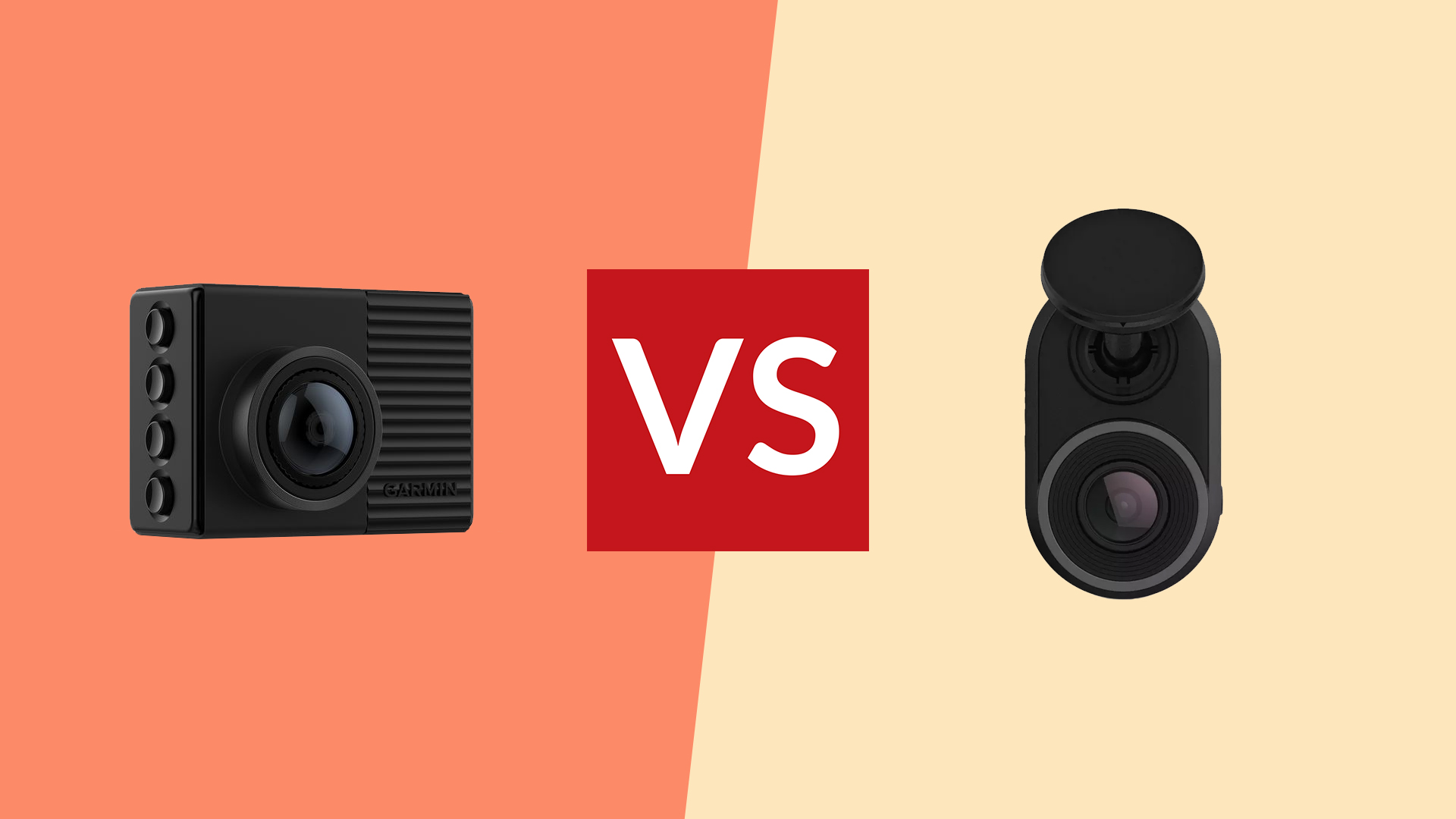

Garmin’s Dash Cam range includes some of the best dash cams you can buy today. From the sub-£100 Mini to the Dash Cam 66W at twice the price, they are all packed with features and smart design.
In this article, we will compare the two aforementioned models, the Mini and the 66W. These are priced at £100 and £200 respectively, and each can make a great addition to your car, especially when it comes to recording useful evidence if you are ever caught in a collision on the road.
Garmin Dash Cam 66w vs Mini: Design and Hardware
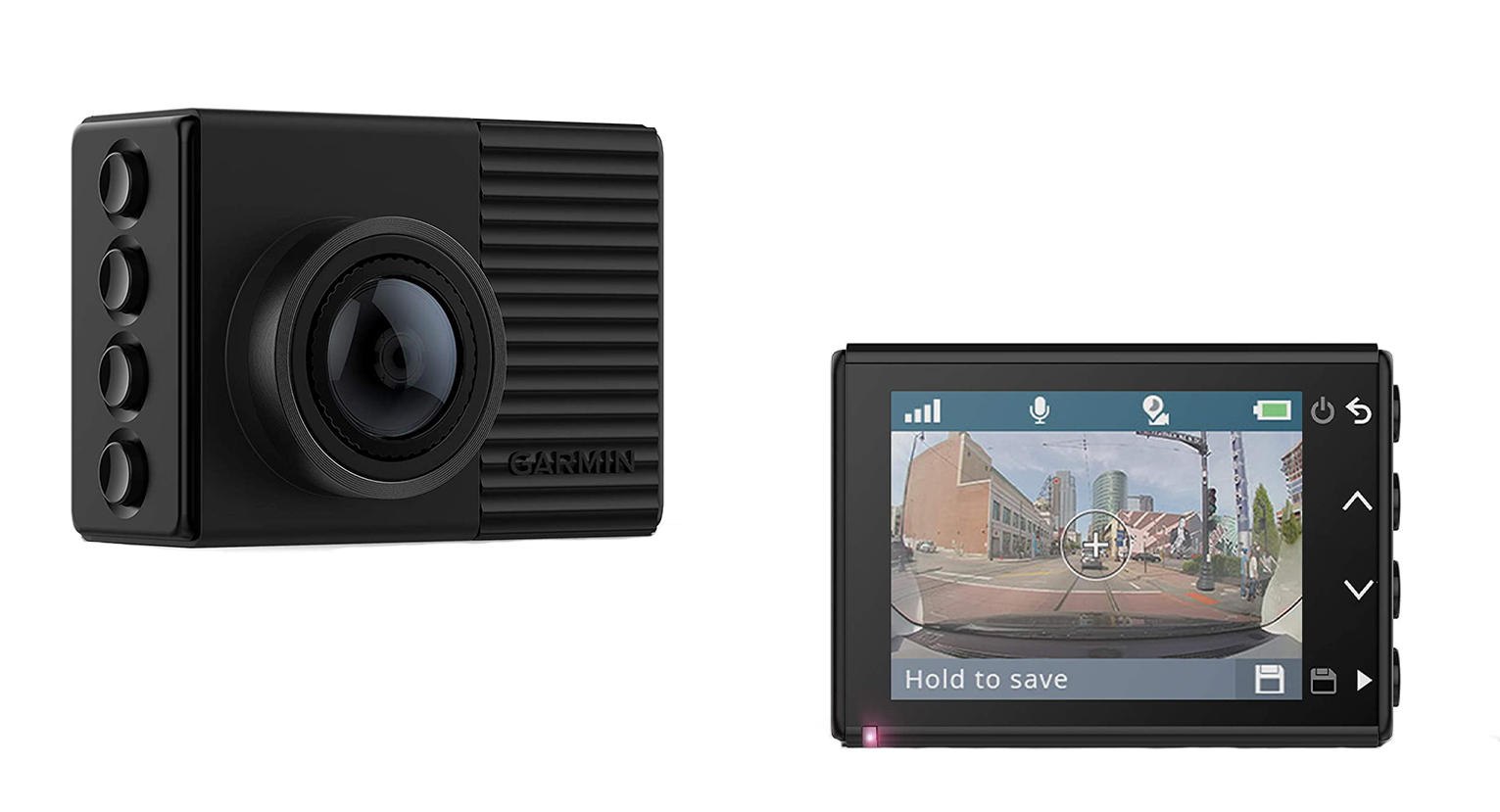
The Garmin 66W looks like many other dash cams, in that it is a small box with a camera lens on the front and a colour display with buttons on the back. The 66W is remarkably compact, at just 5.6 x 4.0 x 2.1cm and weighing 61.3g. Despite its compact size, the 66W features a 2.0-inch TFT LCD display with a 320 x 240 resolution. This isn’t a touchscreen, however, and is controlled via buttons surrounding it.
The camera has its own battery but this only lasts for 30 minutes on a full charge, so is only really useful for short journeys. Ideally you’ll want to plug the camera in using the included USB cable. This can be attached to your car’s USB port or 12V lighter socket, or with Garmin’s hard-wiring kit, which gives the camera a constant source of power and enables parking mode (more on which later).
Garmin’s Dash Cams all use the same windscreen mounting system. This features a short plastic arm that connects to the camera using a ball-and-socket joint, then to the windscreen using a magnet. This attaches to a small metal disc that has sticky 3M tape on its back for fixing to your windscreen. It’s then just a case of snapping the camera and its mount onto the magnet, and away you go.
Now for the Dash Cam Mini, and there are no prizes for guessing this is smaller than the 66W. It really is a tiny dash cam, measuring just 3.1 x 5.3 x 2.9cm and weighing just 28.7g. The camera is so compact because it doesn’t have a display, and is instead very much a case of set-it-and-forget-it. There is also no battery and the camera can’t be used without being plugged in, although there is a supercapacitor to give it instant power.
The Garmin Dash Cam Mini uses the same mounting system as the 66W and connects to power using the same USB cable or optional hard wiring kit. There is a single button on the side for telling the camera to save sections of video, and it has the same automated recording features as other models of Garmin Dash Cam.
Sign up to the T3 newsletter for smarter living straight to your inbox
Get all the latest news, reviews, deals and buying guides on gorgeous tech, home and active products from the T3 experts
Garmin Dash Cam 66w vs Mini: Camera and Features
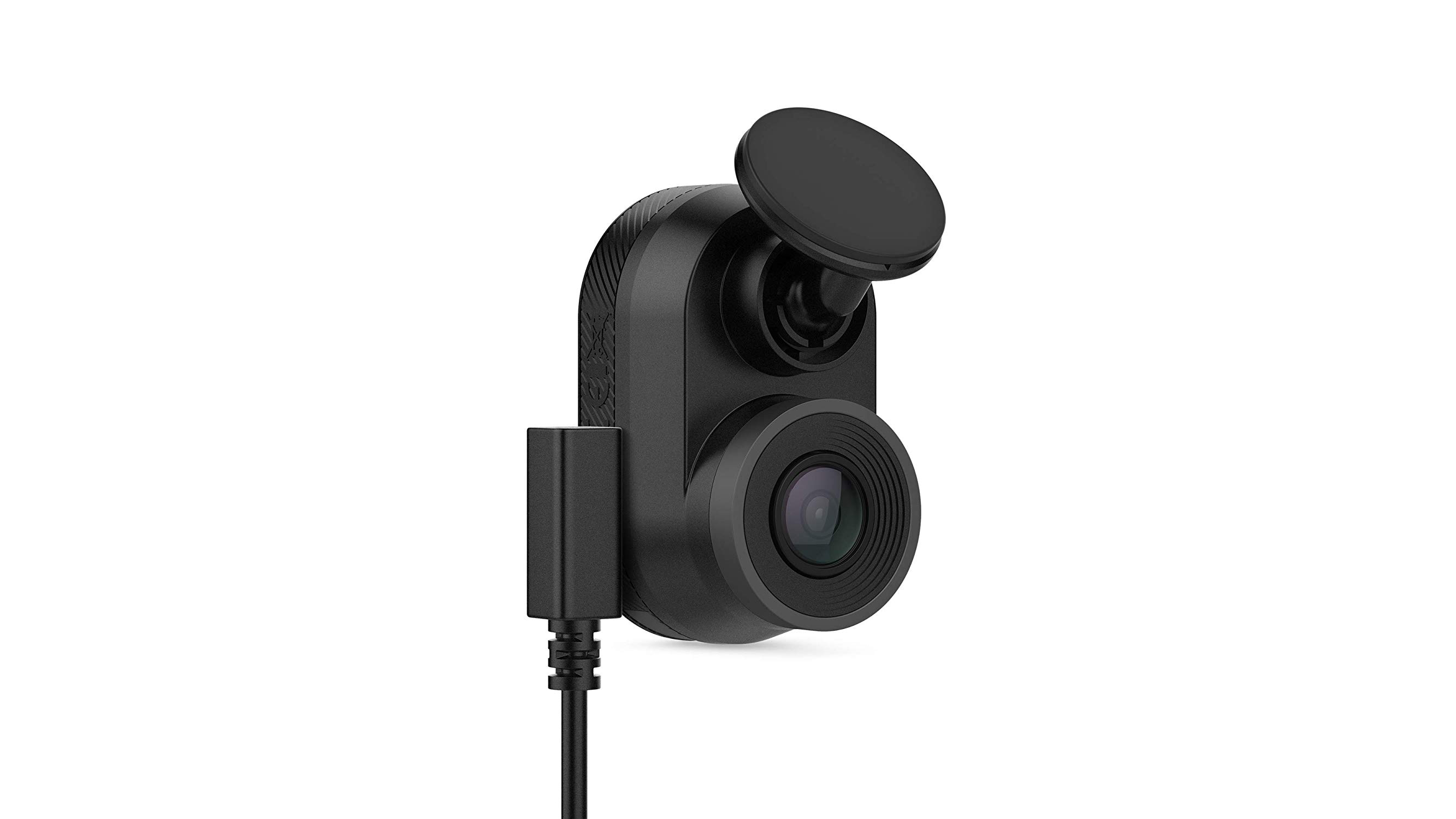
The camera of the Dash Cam 66W has a more-than-HD resolution of 1440p and a wide field-of-view of 180 degrees, meaning it can see right across the front of your car, from one side to the other. The camera shoots at a smooth 60 frames per second and includes Garmin’s Clarity HDR system for better video quality in varied lighting conditions.
As for features, the 66W has everything you would expect from a dash cam, including GPS and incident detection that automatically saves video to a microSD card (sold separately). The camera constantly records video, overwriting the oldest footage once the memory card gets full, but footage recorded when an incident is detected (or when you press the save button) is permanently stored.
There’s also voice control, so you can say ‘OK Garmin’ then ask the camera to save a recording, or switch audio recording on and off.
The camera has a suite of driver assistance features, including forward collision warnings, lane departure warnings, speed and red light camera alerts and go alerts, where the camera beeps to let you know the vehicle ahead has moved forward. Some owners may find these features useful, but we prefer to keep our eyes on the road and not be distracted by a small display that is likely positioned at the top of the windscreen and potentially not directly in view.
Lastly for the 66W, it features Garmin’s syncing feature where up to four models of Dash Cam can be fitted to a vehicle and record video in sync with each other. It is likely overkill for a car, but a useful feature for larger vehicles like trucks, vans and motorhomes.
Now to the Garmin Dash Cam Mini, and naturally there are fewer features given the lower price and no screen. The camera has a 1080p resolution, meaning 1920 x 1080 pixels, shoots footage at 30 frames per second, and a 140-degree field-of-view. These stats are all lower than the 66W, but still mean Full HD video at a respectable field-of-view and frame rate.
If you drive a particular large vehicle then the 140-degree angle might be a little restrictive, but for just under £100 we think the Dash Cam Mini still represents good value of money.
As for features, video is constantly recorded then permanently saved when a collision is detected or when you press the save button. Along with the 66W, the Dash Cam Mini also has Parking Surveillance mode, which works in conjunction with the hard-wiring kit and means the camera keeps an eye on your vehicle while it is parked, recording when movement is felt.
Both cameras work with the Garmin Drive app for iOS and Android, where you can transfer footage from the camera to your smartphone using Wi-Fi and Bluetooth.
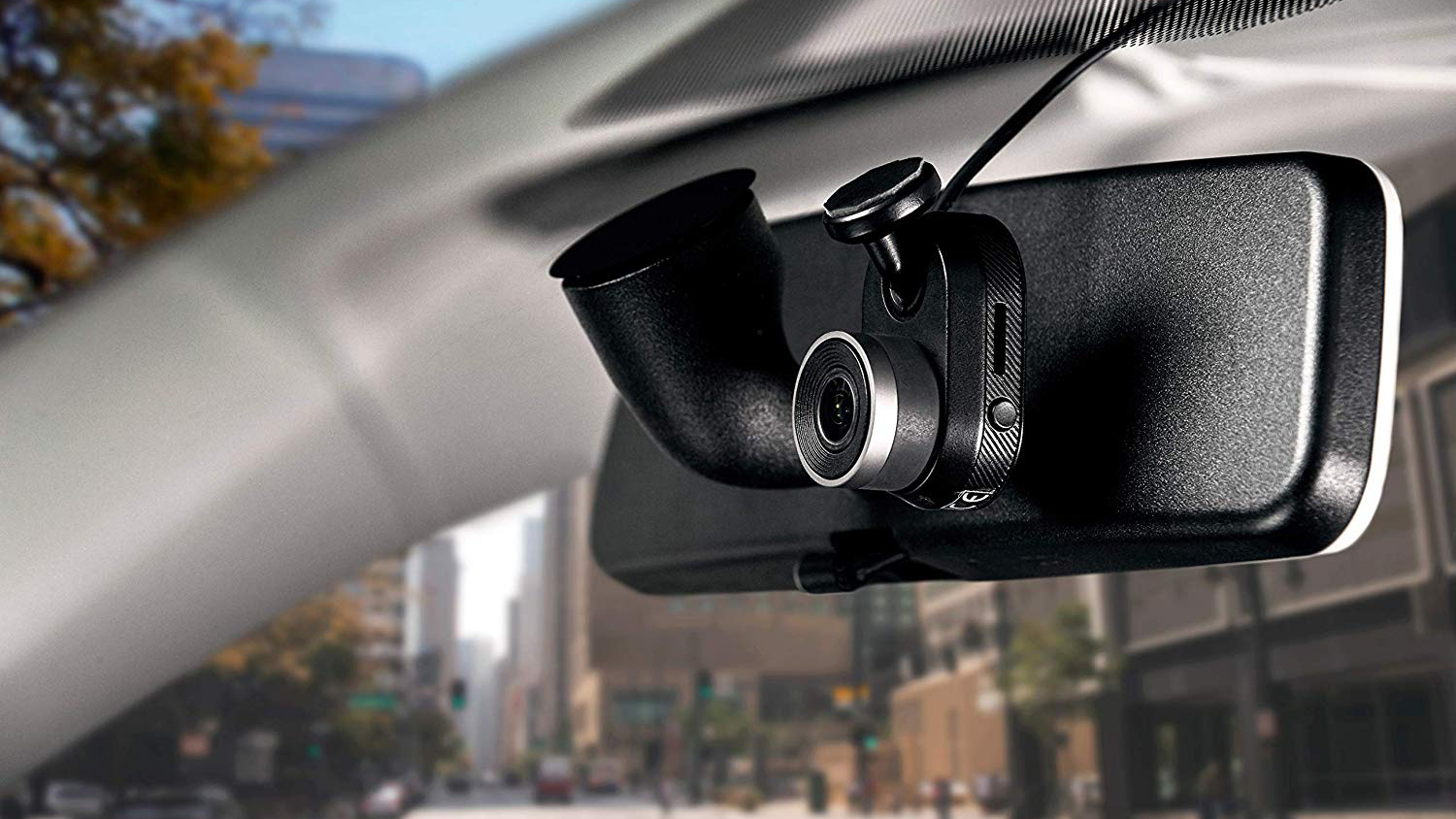
Garmin Dash Cam 66w vs Mini: Price
As we mentioned earlier, there is a substantial price difference between these two cameras. At the time of writing, the Dash Cam Mini is £99.99 and the Dash Cam 66W is £199.99. The latter shoots higher-quality video and has more features, including driver assistance and a 30-minute battery life. But we would argue that those features aren’t entirely necessary, and as long as you are happy with Full HD video and 140fps, then at £99.99 (and with a very compact design), the Mini is hard to ignore.
But if you want those extra features and image quality, then the Dash Cam 66W still represents good value for money, given its compact design, simple mounting system and the option for hard-wiring with parking mode.
Liked this?
- Best dash cam: top car dash cams tried and tested
- Best cheap dash cam deals
Alistair is a freelance automotive and technology journalist. He has bylines on esteemed sites such as the BBC, Forbes, TechRadar, and of best of all, T3, where he covers topics ranging from classic cars and men's lifestyle, to smart home technology, phones, electric cars, autonomy, Swiss watches, and much more besides. He is an experienced journalist, writing news, features, interviews and product reviews. If that didn't make him busy enough, he is also the co-host of the AutoChat podcast.
-
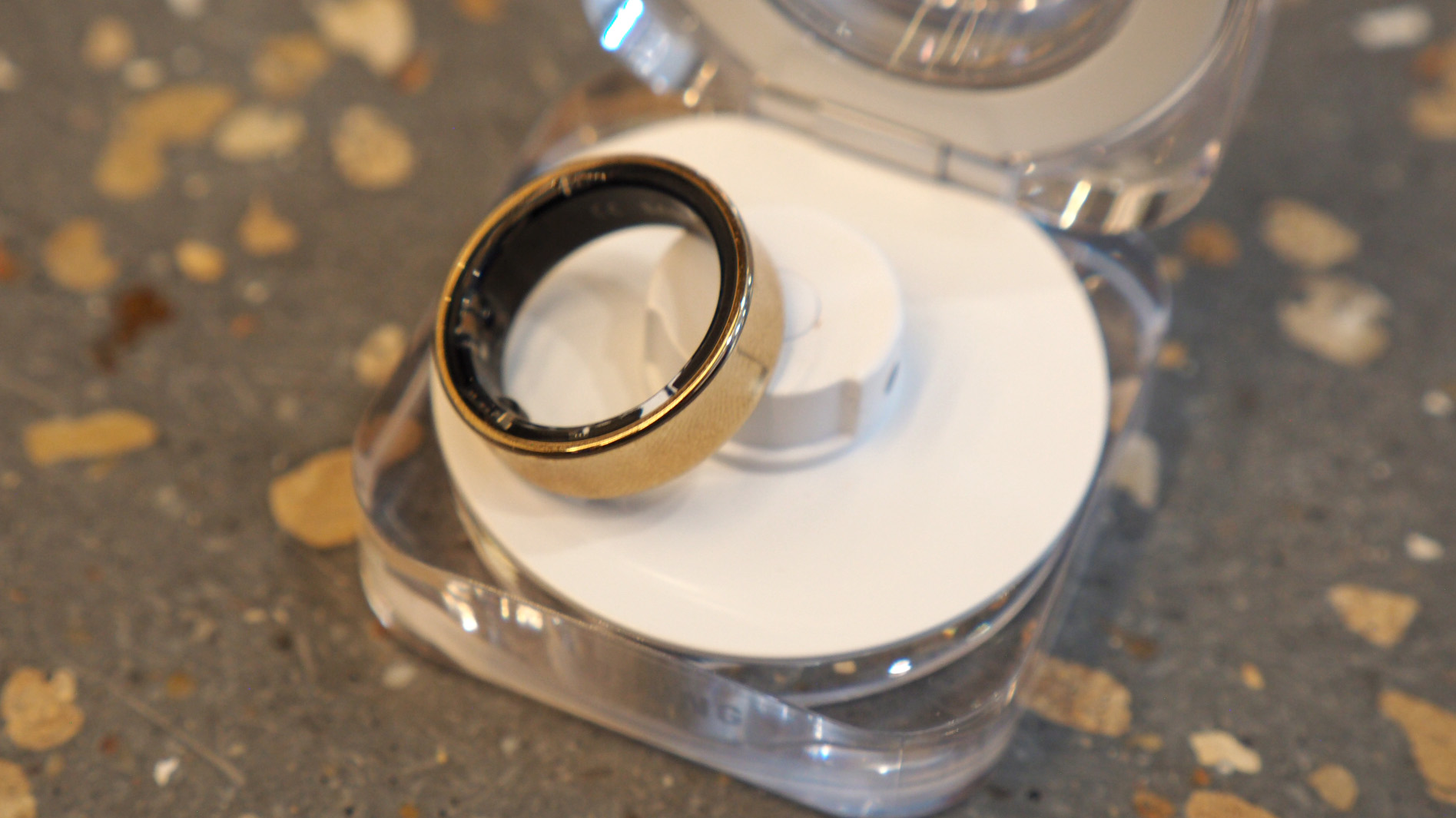 In the future, you might never have to take off your Galaxy Ring to charge it
In the future, you might never have to take off your Galaxy Ring to charge itA newly uncovered patent reveals Samsung is working on a wearable charger for its Galaxy Ring, and it makes a lot of sense
By Matt Kollat
-
 Google just added a new Gemini video creation tool I never knew I needed
Google just added a new Gemini video creation tool I never knew I neededGemini Advanced just added Veo 2 video generation
By Mike Lowe